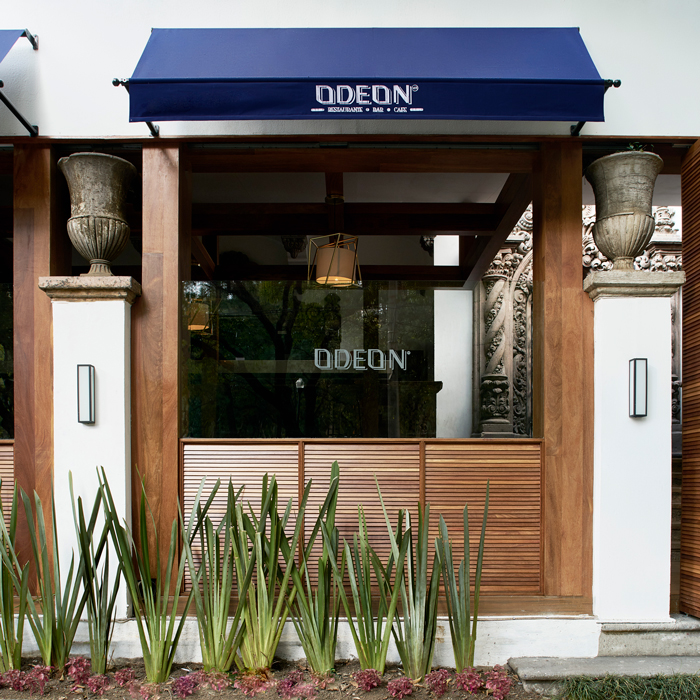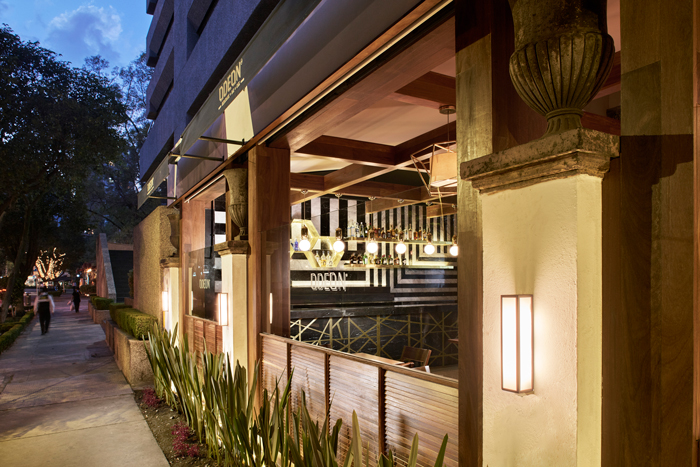Creative Space: James Bassant, Astro Lighting
James Bassant is the Co-founder and Design Director of Astro, a leading contemporary lighting designer supplying timeless luminaires for high-end hospitality and residential projects globally. We spoke with James about the spaces which inspire him including which bar or restaurant spaces he finds inspirational.
Please tell us more about your role at Astro Lighting?
My approach as Design Director is to take what could be a set of words or even a formal brief and bring that into the world in a 3-dimensional form. Our product management team are fantastic at identifying opportunities within our range and the market, and we also take great care to fulfil the needs of our customers. Whether finding unique solutions to enhance existing products or creating something new from scratch, it is exciting to wrestle a product from the blank pages of my sketchbook and turn that into a concept for the everyday.
What is your favourite creative space?
I am either very fortunate or somewhat odd that I treat designing lights as a hobby. One of my favourite spaces of inspiration is sitting in my garden or my garden office with a cup of tea or a glass of wine doodling what comes to mind. I always have my sketchbook to hand as I genuinely don’t know when an idea will pop into my head. The sinuous form of a door handle, striking architectural details within a restaurant or an old building, or even a glimpse of furniture or a pattern within a tv programme perhaps, they all spark tiny seeds of an idea, some that remain as sketches, others that become fully formed designs.
When it comes to spaces, which spaces inspire you and why?
This a bit like explaining a joke, as soon as you start to think about it, then it stops being funny. Some spaces just resonate with you more than others, some are emotive or nostalgic, others are aspirational and experiential, but being outside or having a connection with nature is the most important space for me. Each cycle of nature brings with it something new or intriguing which sparks my imagination.
When it comes to R&B spaces, which spaces inspire you and why?
One restaurant I love going to is City Social at Tower 42 in London. You get great views over London that slowly change as the sun sets and the city lights turn on. This is beautifully complemented by very low illumination levels in the restaurant itself. Subtle, moody, theatrical and very intimate, the restaurant could be filled with people but you are blissfully unaware and naturally focus on the people you are dining with. Lighting enhances the experience, great cocktails may also help.
Why lighting in R&B spaces is so important and its impact on atmosphere?
When a lighting scheme is great you almost don’t notice it; it works in harmony with the overall design scheme. However, when a space is badly lit, it stands out and can affect the guest experience. An example that sticks in my memory is a hotel I went to for New Year’s Eve. The hotel was presented as a highly stylish destination, but the lighting scheme in the bar undersold the luxurious design it was known for. A few badly placed downlights of different colour temperatures and garish crystal ceiling lights almost gave you a headache. On the contrary, a restaurant scheme that I think is truly sublime is at Gravetye Manor in West Sussex. The perfect level of ambient lighting delicately highlights the tables and design features of the space thanks to well-positioned and never glaring downlights. It’s a soothing lighting scheme that truly enhances the space and the whole dining experience. Not to forget the external aesthetic of a restaurant or bar also, it should hold just as much appeal as the interior. Aside from a culinary offering, the exterior of a space is what sets the initial tone and can draw the eye of a potential guest.

A good example is The Odeon Bar and Restaurant based in Mexico City. Designed by Margaret Bissu, we supplied our Salerno exterior wall lights to illuminate the recently renovated dining spot. The lights themselves needed to be subtle and in keeping with the internal design, but deliver understated illumination that elevated the architecture of the building.

Architecture & Interior Design: Margaret Bissu Interiors – www.margaretbissu.com – info@margaretbissu.com Collaborators: Diego de Moreno
How lighting in bars or restaurants has advanced over the years and its impact on the sector?
I think one of the main advances is the growing awareness of the impact of lighting schemes and the demand for a more personalised and experiential setting, in which lighting plays a leading role. For many spaces, luminaires are specified to blend into a scheme, where the most important factor is a light’s function and output, not necessarily the light itself. At other times, they are chosen to embellish and enhance a scheme, to add drama, style, or interest. For large parts of our day, we take light for granted thanks to the flick of a switch, but within a restaurant or bar it is vital for achieving the desired ambience. In general, lighting is a key tool within interior design but it’s often an afterthought. Light instantly breathes life into a space, it can unify a room design to achieve cohesion and atmosphere but at the same time can create subtle accents to highlight design features, or encourage a particular flow within a space. We develop a mix of contemporary lighting with this very thought in mind. Lighting should be used not only to produce illumination but blend well with the overall scheme.
Contact Astro Lighting on BCFA Product Finder
The BCFA Product Finder is a unique search engine created especially for interior designers to source contract furnishing companies. Utilising this platform will support your findings for upcoming projects, with over 200 members profiles showcasing the latest product launches, new materials available, industry news, and design trends.




